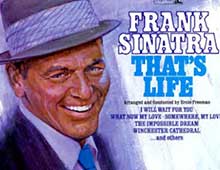The Night
Frank Sinatra
Recorded
"That's Life."
I Was There.
Dean Kay
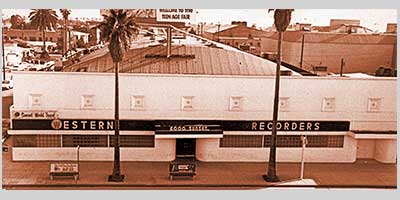
It was late autumn, 1965, when I got a call telling me that Frank Sinatra wanted to record my song, Oh, sure ....
I was 22 in 1962 when I wrote "That's Life".
I was on Christmas leave from the Army. The draft had ended what seemed to me to have been the launch of a promising career as an entertainer.
My partner, Hank Jones, and I (as Hank and Dean) had auditioned with 1500 other hopefuls to become regular featured performers on the nationally televised, ABC Network, day time Tennessee Ernie Ford Show to be produced in San Francisco across the Bay from where we lived. We got the gig. As a result, we also landed a recording contract with RCA Victor Records.
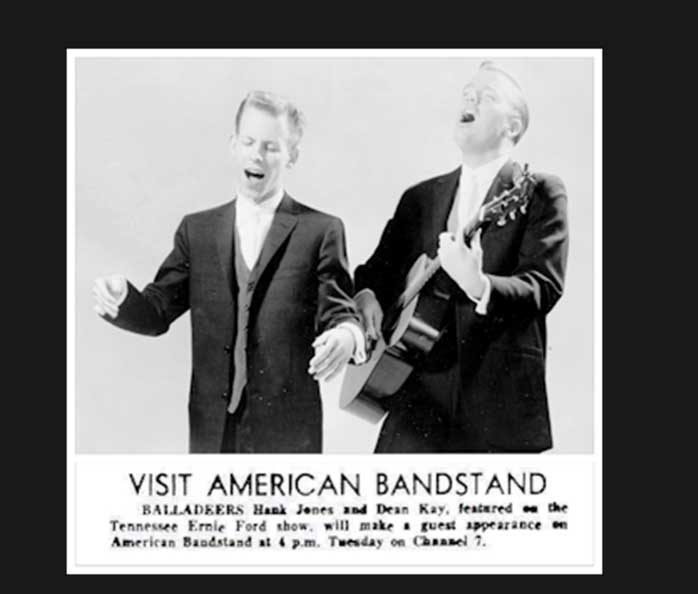
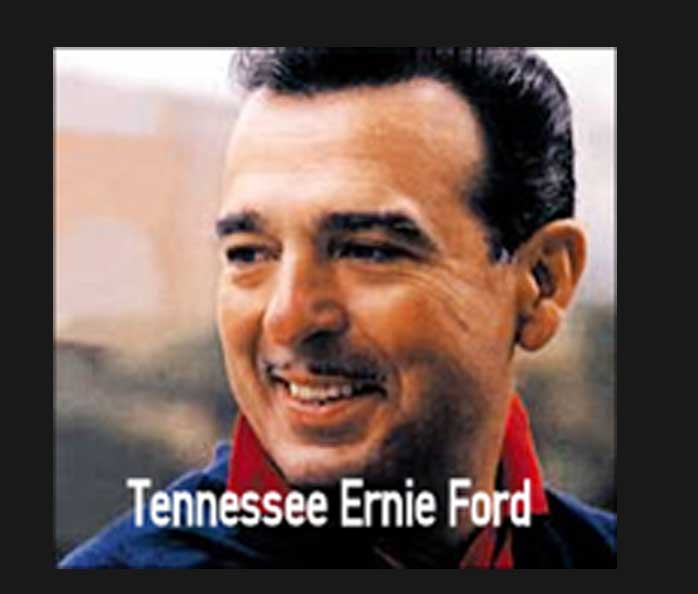
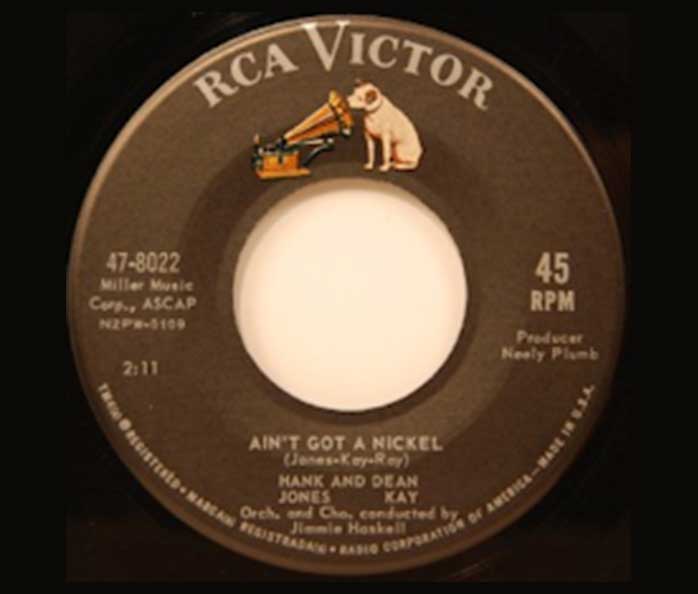
But, all of that was gone ... As a practical matter, I was starting over. ,,, Alone.
While on leave I was staying with my parents at the home I grew up in in San Leandro, California.
As I had done hundreds - maybe thousands - of times before, I sat down at the piano and started aimlessly searching for melodies on the keyboard.
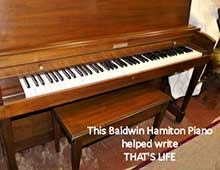
As I played, I started thinking about what I was going to do to rebuild my career ... and words and music started to flow ... "That's Life, that's what people say, you're riding high in April ... shot down in May, but I know I'm going to change their tune, When I'm back on top in June." ... 20 minutes later most of the song had been born.
I really didn't think too much of the song because it was my story; and, not having experienced a whole lot of real world life at the time, I didn't think anyone else would get it.
After I was discharged from the Army, I moved to L.A. to try to rekindle my career... I made demonstration recordings of a few songs I had written to see if I could generate interest from record companies and music publishers. As a last minute thought I threw in a 'once through' of "That's Life" at the end of the date.
I didn't have a lot of trouble getting in to see music publishers because Hank and I and our writing partner, Larry Ray (especially Larry), had made several trips to L.A. from the San Francisco Bay Area to hock the songs we'd written and try to get Hank and Dean discovered.
Oh, and having been on National TV 5 days a week helped open a few doors as well.
Much to my surprise, "That's Life" immediately started drawing attention. Most enthusiastically from the song plugger at Four Star Television Music, Kelly Gordon. Kelly had some ideas for a few word changes which I thought were O.K. so I signed the song to Four Star with Kelly Gordon receiving 25% of the writer's share.
We re-demoed the song and aimed it straight at... Ray Charles.
Kelly started showing the song around town and instantly it started getting recorded ... The first record was by Marian Montgomery on Capitol Records with a strange jazz waltz arrangement that I never quite figured out. Next was Gene McDaniels on Liberty - a great record that wasn't released until after the Sinatra hit. Della Reese cut it live at the Playboy Club ... and then a new artist on Columbia, O.C. Smith, released it as a single and the record started climbing the charts ... For a while O.C. was billing himself as O.C."That's Life" Smith ... and, of course, he went on to become a super star with the string of wonderful smash hit records.

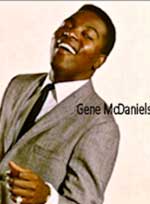
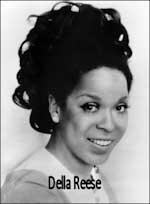
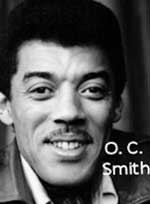
One day while in his car, Frank Sinatra heard O.C.'s record on the radio. He stopped, called his daughter, Nancy, and told her to find the publisher because he wanted to record the song. She did.
No one in their right mind would have ever thought to pitch a Ray Charles type song to Frank Sinatra ... so, the song found a way to get to him itself.
The following day I got a call from Kelly. He said, "You're not going to believe this ... Frank Sinatra wants to cut your song!" He was right, I didn't believe it.
Under U.S. Copyright Law, because the song had been recorded, it was freely available for anyone to record subject to paying the full statutory royalties to the copyright owner.
In an attempt to forestall anyone else from cutting the song before the Sinatra record was released, the publisher immediately sent people all over town to pick up demos and lead sheets that had been delivered to producers and artists. Ray Charles office was one of the stops ... We were told that Ray was planning to cut the song but he was so upset by the demo being taken away from him he never got around to it.
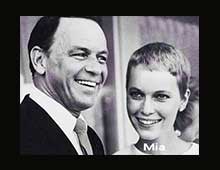
It was almost a year from the day I got that call to the day Sinatra, along with his wife, Mia Farrow, walked into Western Recorders on Sunset Blvd in Hollywood to make the record.
It was, perhaps, the longest year of my life ... Would he actually cut it .. or not.
"Strangers in the Night" and "Summer Wind" were on Reprise Records release schedule ahead of "That's Life."
By the summer of 1966 the record hadn't been made and Reprise was starting to get concerned. ... So was I. ... The song was scheduled for release in November of 1966 to coincide with the first airing of "Frank Sinatra: A Man and His Music Part 2" on CBS TV and the label wanted to be sure they actually had a record to promote.
At the time Sinatra was in London shooting the film, "Tony Rome" and someone at the record company thought it would be a good idea to record the background tracks in L.A. and send them to London so Sinatra could add his vocal. On July 25th the track was cut - using the Nelson Riddle arrangement that would be used on the TV Special - and was shipped off to London.
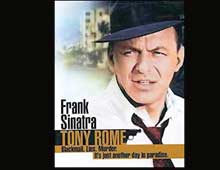
Sinatra would have no part of overdubbing the track. He preferred to record live with an orchestra, and, when possible, in front a group of invited guests to help create the spontaneity of a live performance.
When I heard the record hadn't been made ... I thought ... That's it, "That's Life" is over.
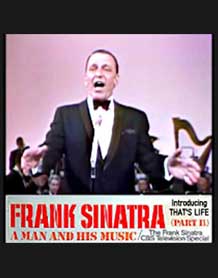
When Sinatra got back to L.A. he immediately shot "Frank Sinatra: A Man and His Music Part 2." at CBS Television City in Hollywood. In the show he introduced "That's Life" as his new release. Still no record. I thought, 'they're gonna cut the song from the show ... and that's it, "That's Life" is over.'
But, a few weeks before the show was scheduled to air I got a call from Sarge Weiss, a friend in Sinatra's office, asking if I wanted to come to the studio to watch the 'old man' cut my song... Of course, I said "No" ... Yeah, right.
On October 18, 1966, Sinatra, Mia and two body guards with shotguns walked into Studio A at Western Recorders a few minutes before the date was set to begin at 8:00pm.
He joked with the orchestra, said a few words to the invited guests, and consulted with producer, Jimmy Bowen and arranger Ernie Freeman.
The orchestra was rehearsed, balanced and ready ... and technical issues that had come up with the orchestra were addressed before Sinatra arrived. Levels were checked. Tape rolled. And, history was on its way to being made.
I got to sit in the control room (booth) not 5 feet from where Sinatra listened to the playbacks of his performances. On the first take Sinatra's vocal wasn't audible in the booth - only Bowen could hear it through headphones while the recording engineers listened closely to the orchestra to be sure the technical issues had been resolved.
After the take Sinatra came into the booth to listen to the playback. The tape was rewound, Sinatra's pot was cranked up and for the first time we all heard Frank Sinatra's interpretation of "That's Life." To say I had goosebumps would be putting it mildly ...
But, Bowen and Sinatra got into a bit of a tiff after listening to the first take ... Sinatra, who was known for being a 'one take guy', got a little upset when Bowen asked him to do it again ... "but this time with a little more bite" ... Sinatra, somewhat reluctantly, finally agreed ... and the fact that he was miffed gave Bowen exactly the performance he was looking for ... Sinatra ended the first take with "Oh yeah" and the second with the iconic "My, My" which I've always thought was Sinatra's way of saying to Bowen ..."So, how do you like that, Charlie!?"
Sinatra came back into the booth to listen to the second take ... Everyone was ecstatic. If I recall correctly, I was gasping for air.
"Sounds like a hit to me" he said and with that he took Mia's hand and left the studio .... It was about 20 minutes from the time they walked in to the time they walked out. They were both dressed to the nines and had dropped by to take care of a little unfinished business on their way to a party.
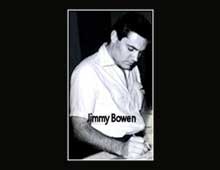
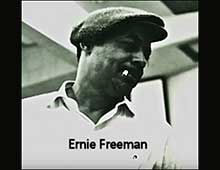
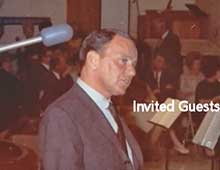
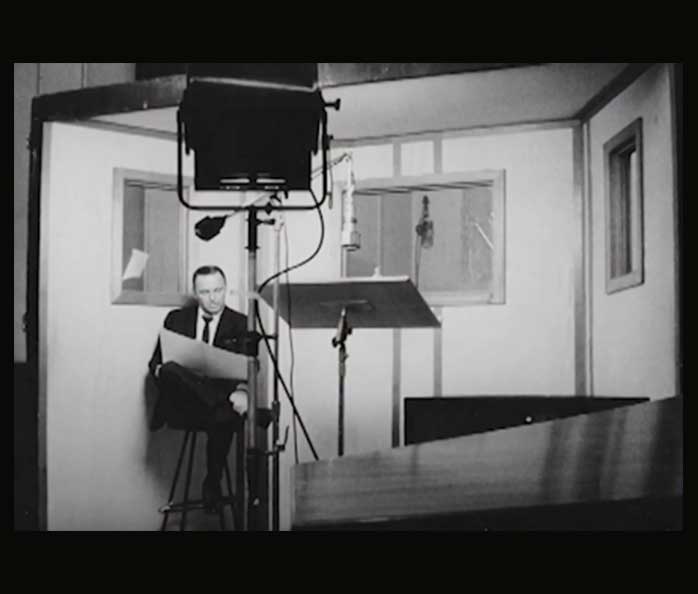
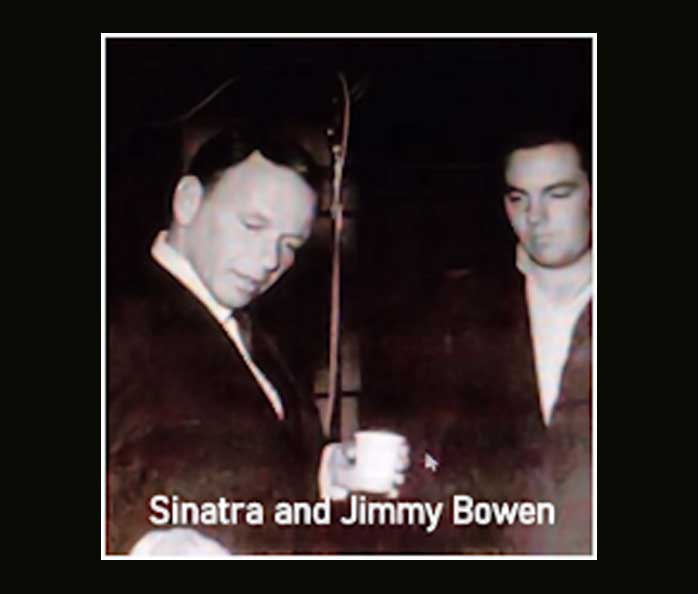
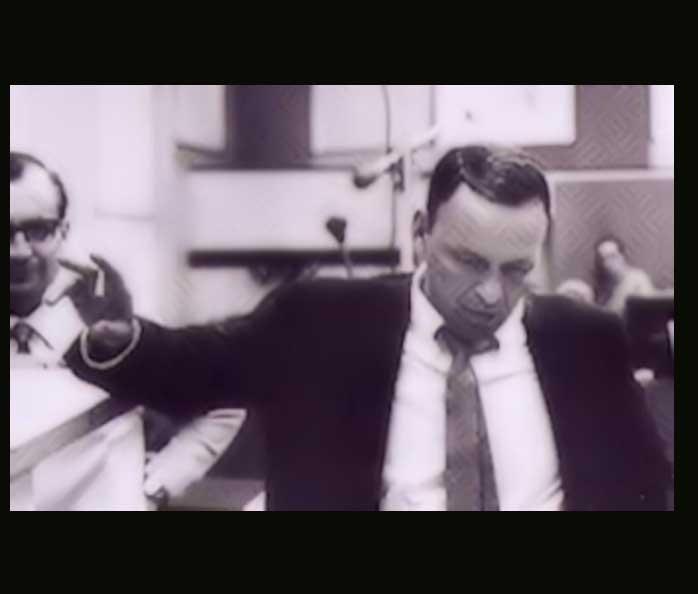
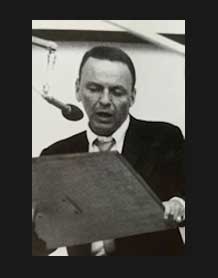
Jimmy Bowen, who produced "Strangers in the Night" and dozens of other hits with some of the top artists in the world, thought the Nelson Riddle arrangement used on the TV Special wouldn't work for radio, so he hired Ernie Freeman to create a new arrangement with a little more contemporary 'grit.' Freeman added the world famous Blossoms to echo the song title and called on Mike Melvoin to create the iconic Hammond organ intro and organ fills which he did off the top of his head ... in one take ... with no rehearsal. Both the Blossoms and Mike added their parts after Sinatra left.
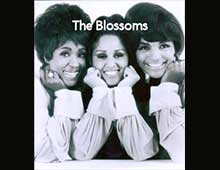
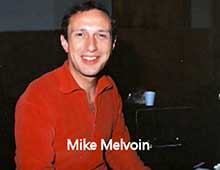
The orchestra was packed with the finest of the finest Hollywood studio musicians ..
... including members of the legendary Wrecking Crew ...
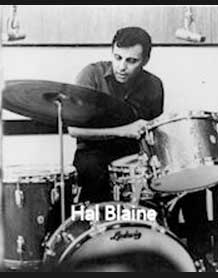
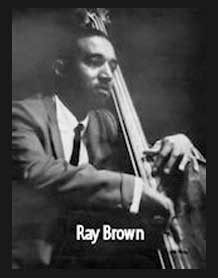
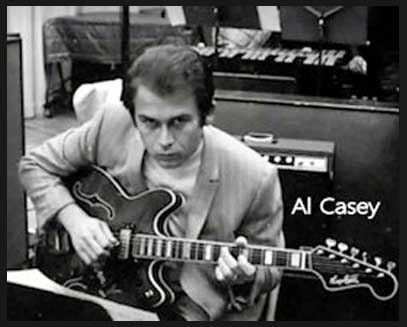
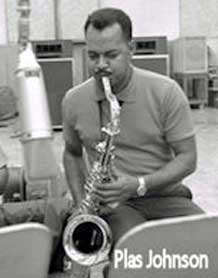
and 40+ other "first call" players ... in other words, THE dream team.
This is the American Federation of Musicians contract covering the 10/18/1966 Frank Sinatra recording of "That's Life."
Click to Enlarge Photo
The date started at 8:00PM .. I stayed for the Blossoms and Mike Melvoin overdubs, one edit (to take care of a clam in the orchestra) and the mix. I was home by 10:00.
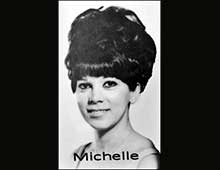
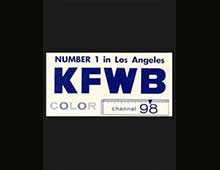
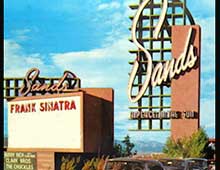
At 3AM I got a call from my future wife, Michelle, telling me to turn on KFWB - at the time the hottest rock station in L.A. ... and there it was ... Frank Sinatra's new single, "That's Life" ... Bowen had acetate dubs of the recording made and sent to the major rock stations across country to make sure the song would be at radio and on its way before the special aired.
"The single went on to become Frank Sinatra's fastest selling single of all time; and, has been responsible for encouraging at least 300 other artists to record the song worldwide.".
Sinatra invited Kelly and me to the Sands Hotel in Las Vegas to watch him perform the song for the first time live. He introduced us from the stage, invited us to the after party ... and picked up the tab for the entire trip.
For a 26 year old, I've got to tell you the whole experience was mind blowing ... and still is.
There is no denying that Frank Sinatra - in just 20 minutes - changed the course of my life from that moment on.
I will be forever grateful.
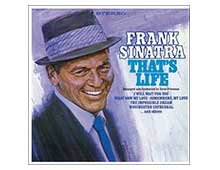
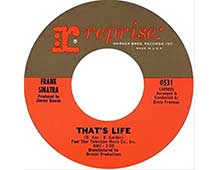
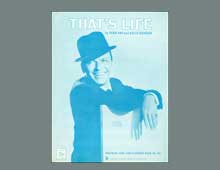
Watch and Listen to, Frank Sinatra's performances of "THAT'S LIFE".
Click the images below





